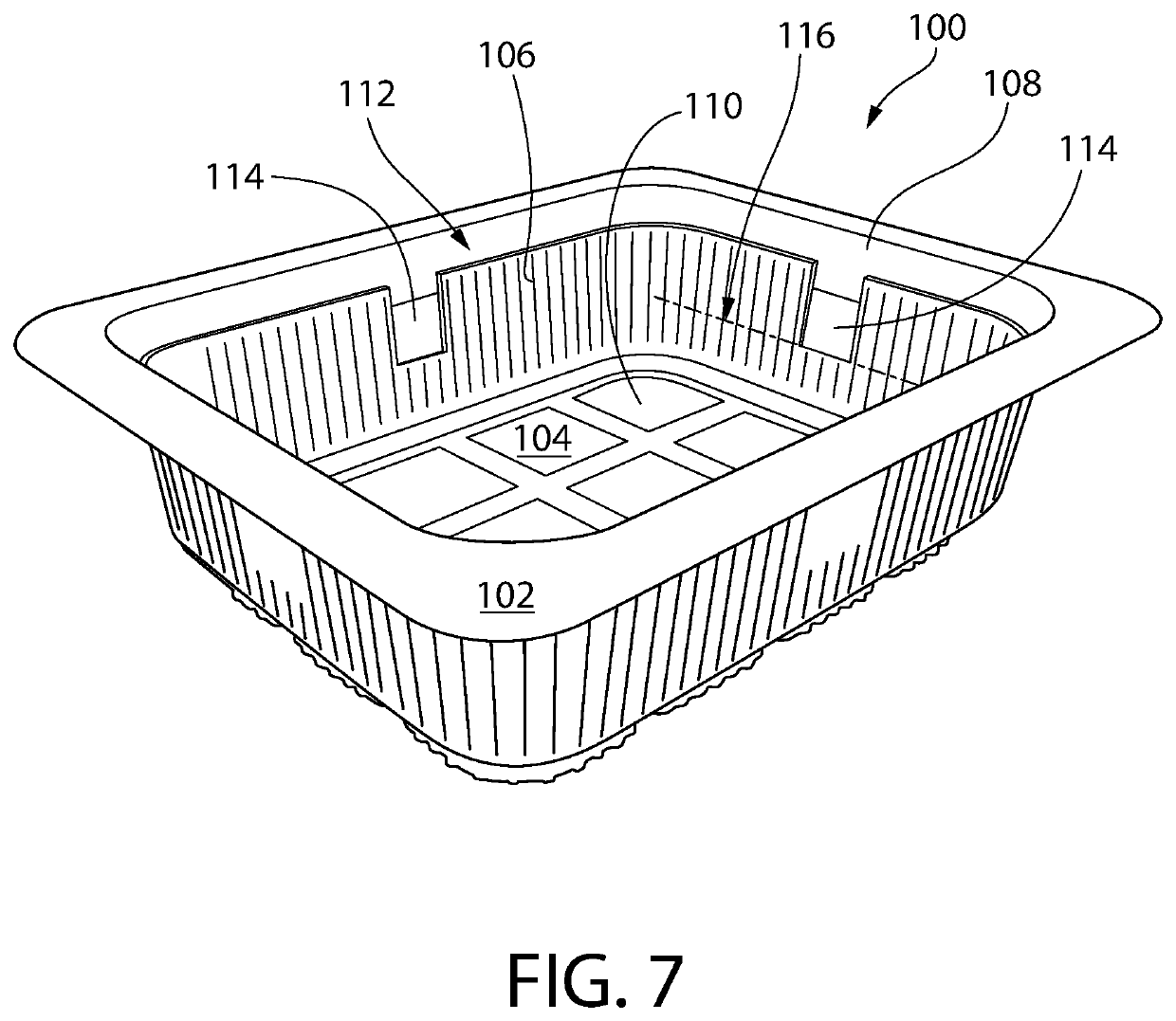Antimicrobial gas releasing agents and systems and methods for using the same
- Summary
- Abstract
- Description
- Claims
- Application Information
AI Technical Summary
Benefits of technology
Problems solved by technology
Method used
Image
Examples
example 3
bial Film Location Testing
[0178]Entrained polymer film (X2597 film, described above) was placed in the headspace of a tray at various height positions on the sidewalls to test the effectiveness of various antimicrobial film locations / positions, as well as various sampling locations. The abbreviation “MCT” as used herein refers to Maxwell Chase Technologies, LLC of Atlanta, Ga. The abbreviation “FPT” refers to FRESH-R-PAX® trays of Maxwell Chase Technologies, LLC.
[0179]The following materials were used in this example:
16 - 1 g X2597 Film Strips Lot #02116A030A (CSP Technologies -Auburn, AL).66 Tomatoes (5 × 5 red tomatoes purchased from grocery store the day ofthe experiment).24 MCT FPT 125D Trays (Maxwell Chase Technologies - Atlanta, GA)having a bottom surface and an opposite opening, with four sidewallsextending vertically from the bottom surface. The sidewalls had a lengthof 10″ and height of 3 5″8 (measured from the bottom surface).24 plastic holders (Made from cut MCT FPT125D t...
example 4
ick Burst Release Profiles to Kill Pathogens
[0187]The effectiveness of reducing the level of Listeria monocytogenes, E. coli, and Salmonella, was evaluated for CSP ClO2 film applied to an upper portion of a tray as compared to control trays absent of the CSP ClO2 film.
[0188]CSP ClO2 emitting films, designated formulation X2597 (described above), at 0.3 mm thickness were used. This formulation was designed to have a fast ClO2 release profile and did not use an overlying polyethylene layer to reduce the moisture uptake rate into the film. As described above, the X-2597 film is a three phase formulation including 50% by weight of antimicrobial releasing agent, 38% by weight ethyl vinyl acetate (EVA) as a base polymer and 12% by weight polyethylene glycol (PEG) as a channeling agent. Trays with either 4 grams or 3 grams of film per tray were used. The tomatoes in the tray were each inoculated with three pathogens, i.e., Listeria monocytogenes, E. Coli and Salmonella.
[0189]The following...
example 5
st Antimicrobial Gas Release Curves
[0206]As described in Example 4, above, trays using 3 g or 4 g of X2597 film demonstrated significant activity in inhibiting pathogenic growth and proliferation over the testing period. The film formulations were configured to provide a quick burst release profile, as discussed elsewhere in this specification. FIG. 14 provides release curves for the 3 g and 4 g versions that were used in Example 4. FIG. 14 also provides a release curve for trays that used only 2 g of film.
[0207]As FIG. 14 shows, the trays using 4 g of film (CSP4) peaked at approximately 30 ppm of ClO2 at about hour 18, while holding above 10 ppm between about hour 6 to hour 33. The trays using 3 g of film (CSP3) peaked at approximately 23 ppm of ClO2 at about hour 15, while holding above 10 ppm between about hour 6 to hour 33. As stated above in Example 4, these embodiments provided sufficient headspace concentration to achieve a desired microbial kill and did so without bleaching ...
PUM
 Login to View More
Login to View More Abstract
Description
Claims
Application Information
 Login to View More
Login to View More - R&D
- Intellectual Property
- Life Sciences
- Materials
- Tech Scout
- Unparalleled Data Quality
- Higher Quality Content
- 60% Fewer Hallucinations
Browse by: Latest US Patents, China's latest patents, Technical Efficacy Thesaurus, Application Domain, Technology Topic, Popular Technical Reports.
© 2025 PatSnap. All rights reserved.Legal|Privacy policy|Modern Slavery Act Transparency Statement|Sitemap|About US| Contact US: help@patsnap.com



